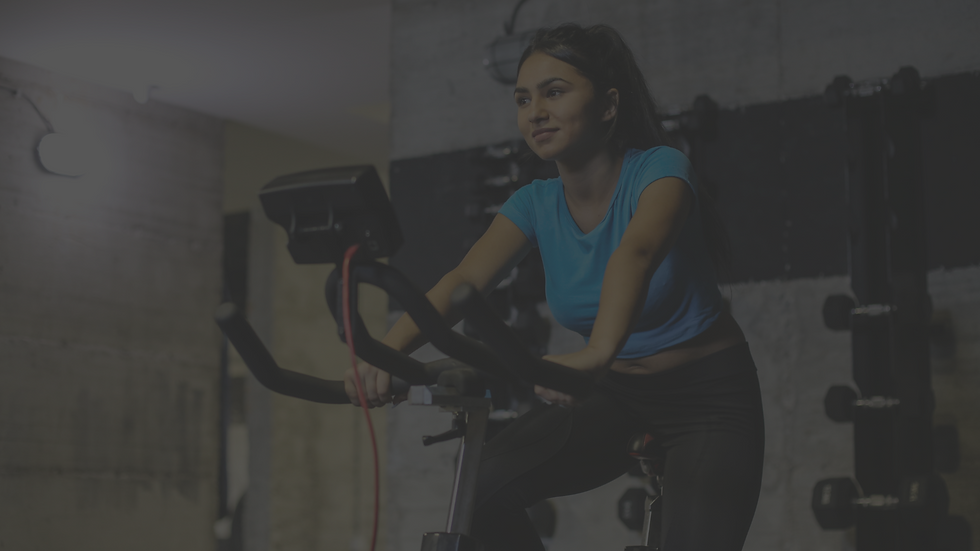
How Tidal Volume Can Elevate Your Athletic Performance
For fitness athletes, breathing efficiency is often an overlooked aspect of performance. However, understanding and optimising tidal volume (TV) — the amount of air you inhale and exhale with each breath can significantly impact endurance, recovery, and overall athletic ability.
The Science Behind Tidal Volume
Tidal volume is a key factor in respiratory efficiency. It refers to the amount of air moved in and out of the lungs during normal breathing, typically around 500ml per breath in an average adult. However, athletes can train to increase their tidal volume, leading to improved oxygen exchange and respiratory efficiency.
During exercise, increased tidal volume allows for greater oxygen uptake and carbon dioxide expulsion. This improves aerobic capacity and delays the onset of fatigue. The lungs work closely with the cardiovascular system, ensuring that oxygenated blood is efficiently delivered to working muscles. Optimising tidal volume can also reduce the frequency of breaths taken per minute, leading to a more efficient breathing pattern and decreased energy expenditure.
Training techniques such as inspiratory muscle training (IMT), resistance breathing exercises, and high-intensity interval training (HIIT) can enhance tidal volume by strengthening the diaphragm and intercostal muscles. Over time, this leads to better control over breathing patterns and greater lung capacity. Additionally, exercises like pursed-lip breathing and rhythmic breathing can help regulate breath control during prolonged physical activity.

Benefits of Enhancing Tidal Volume

More oxygen means better muscle function during prolonged workouts

Enhanced breathing efficiency helps remove carbon dioxide and metabolic waste more effectively

Stronger respiratory muscles enable deeper, more controlled breathing

Useful for high-intensity activities where efficient oxygen use is critical

Training tidal volume can lead to more effective oxygen exchange, reducing shortness of breath during strenuous activity

Controlling breathing mechanics optimally can prevent unnecessary energy loss, improving overall athletic output

How to Train Tidal Volume

Engaging the diaphragm instead of relying on shallow chest breathing allows for deeper breaths and increased tidal volume

Using resistance devices or techniques that strengthen the respiratory muscles improves lung efficiency

Alternating high and low-intensity efforts forces the body to adapt to varying oxygen demands, enhancing lung function

Training with restricted airflow or at high altitudes challenges the lungs to work harder, improving oxygen utilisation

These methods focus on controlled and deep breathing, which can contribute to increased lung efficiency and endurance

This activity naturally encourages deep, rhythmic breathing and can be an effective way to develop greater tidal volume capacity
Optimising tidal volume is an essential yet often underestimated aspect of athletic performance. By incorporating targeted breathing exercises and training techniques, athletes can improve oxygen delivery, delay fatigue, and enhance overall endurance. Whether a competitive athlete or a fitness enthusiast, understanding and training tidal volume can be a game-changer in achieving peak performance. Making breathing exercises a consistent part of training routines will not only boost athletic capabilities but also improve overall lung health, making daily activities easier and more efficient.
Measure Tidal Volume With Our SDK
SDKS | Includes | Description | Ideal for: | Get the SDK |
|---|---|---|---|---|
Tidal Volume | Measure the amount of air moved in and out of the lungs during each breath. Essential for tracking lung efficiency, respiratory capacity, and optimising endurance training. Why do users need this? It ensures their lungs work at peak performance. | Unique fitness analytics: Sports performance coaching, breathwork apps, and stress management solutions. |
Explore Our Other Breathing SDKs
SDKs | Includes | Description | Ideal for: | Get the SDK |
|---|---|---|---|---|
Full suite | The complete breathing analytics SDK—perfect for premium fitness analytics, endurance sports, and smart fitness equipment. Why is this valuable? It provides the most comprehensive insights for maximising performance. | Premium fitness analytics: High-performance training, endurance sports, and smart fitness equipment. | ||
Respiratory rate | Track and analyse breath rate variations to optimise workouts and recovery. Essential for recognising early signs of overtraining or inefficiency. | Unique fitness analytics: Sports performance coaching, breathwork apps, and stress management solutions. | ||
Blood oxygen | Measure how effectively the body utilises oxygen for endurance and fitness tracking. Key for athletes looking to enhance stamina and cardiovascular performance. | Unique fitness analytics: Sports performance coaching, breathwork apps, and stress management solutions. | ||
Heart rate | Monitor real-time heart rate variability and synchronisation with breathing patterns. Provides key insights for stress management, cardiovascular performance, and recovery optimisation. Why does this matter? Better heart health equals better athletic performance. | Basic fitness analytics: Fitness solutions looking to start providing performance metric. |
